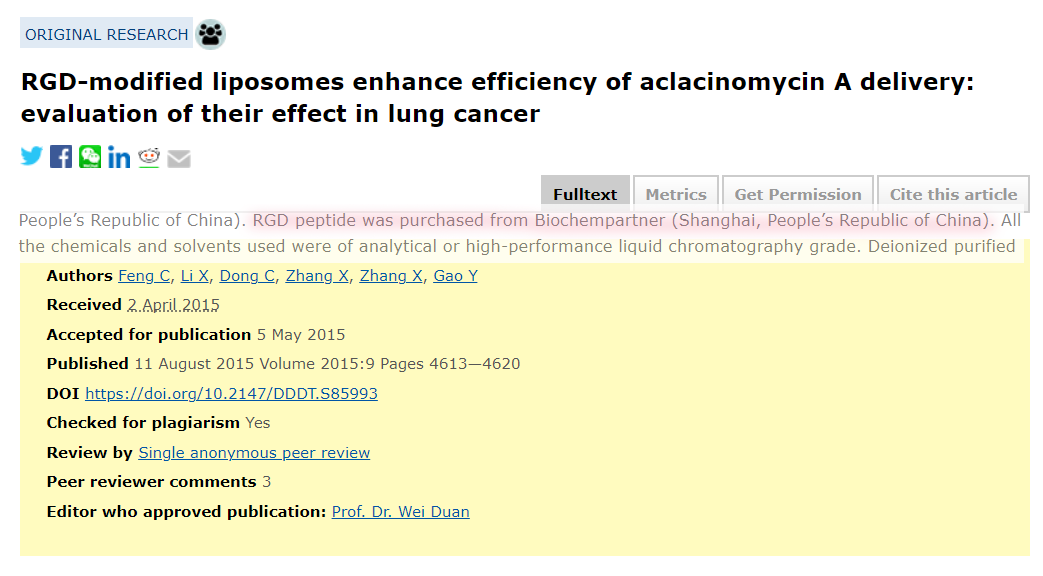RGD-modified liposomes enhance efficiency of aclacinomycin A delivery: evaluation of their effect in lung cancer

Abstract: In this study, long-circulating Arg-Gly-Asp (RGD)-modified aclacinomycin A (ACM) liposomes were prepared by thin film hydration method. Their morphology, particle size, encapsulation efficiency, and in vitro release were investigated. The RGD-ACM liposomes was about 160 nm in size and had the visual appearance of a yellowish suspension. The zeta potential was -22.2 mV and the encapsulation efficiency was more than 93%. The drug-release behavior of the RGD-ACM liposomes showed a biphasic pattern, with an initial burst release and followed by sustained release at a constant rate. After being dissolved in phosphate-buffered saline (pH 7.4) and kept at 4°C for one month, the liposomes did not aggregate and still had the appearance of a milky white colloidal solution. In a pharmacokinetic study, rats treated with RGD-ACM liposomes showed slightly higher plasma concentrations than those treated with ACM liposomes. Maximum plasma concentrations of RGD-ACM liposomes and ACM liposomes were 4,532 and 3,425 ng/mL, respectively. RGD-ACM liposomes had a higher AUC0–∞ (1.54-fold), mean residence time (2.09-fold), and elimination half-life (1.2-fold) when compared with ACM liposomes. In an in vivo study in mice, both types of liposomes inhibited growth of human lung adenocarcinoma (A549) cells and markedly decreased tumor size when compared with the control group. There were no obvious pathological tissue changes in any of the treatment groups. Our results indicate that RGD-modified ACM liposomes have a better antitumor effect in vivo than their unmodified counterparts. Keywords: RGD, aclacinomycin A, long-circulating liposomes, pharmacokinetic, tumor inhibition




